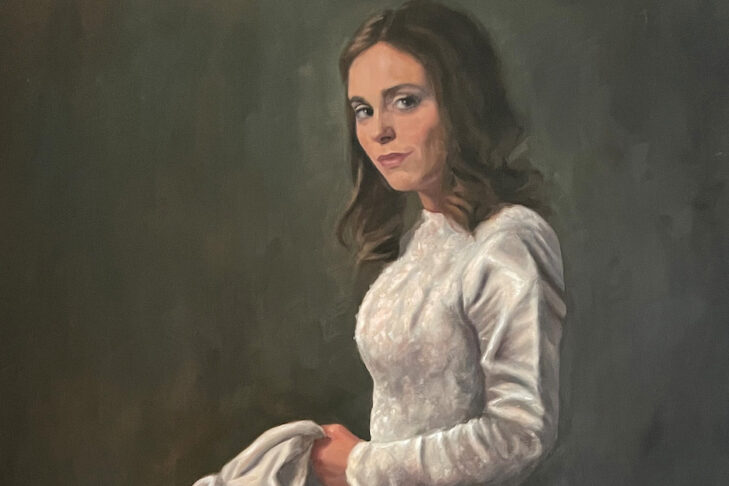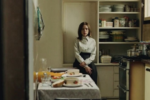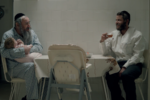Alex Tubis, a 43-year-old artist based outside Tel Aviv, is the genius behind the masterpieces the fictional Akiva Shtisel creates on the hit Netflix series “Shtisel.” In a recent conversation with JewishBoston, Tubis recalled that when the show’s creator, Ori Elon, came calling, Tubis asked if it was a paying job. He had never seen “Shtisel” and thought he was being recruited to work for a student production on a shoestring budget.
After it was clear that he would be compensated, Tubis tried to convince the show’s executives not to use his work. “At the time, I didn’t think I had a distinct style,” Tubis said. “I don’t make conceptual art; my paintings are realistic rather than hyper-realistic, which is in fashion. I don’t like paintings that look like photographs.” Tubis came to his interview prepared to talk about the work of another artist, Peter Doig, whom he cited as “an influence who is more successful than I am.” He added, “I thought Akiva could paint in Doig’s style, which I can do very well.” However, it was quickly apparent that the show’s producers wanted Tubis to be Tubis. “It was an emotional moment for me,” said the artist.
Born in Moscow, Tubis remembers that works of the impressionists, along with Paul Gauguin and Wassily Kandinsky, made a lasting impression. “I was 10 and seeing those paintings at an exhibit [in Russia] was miraculous,” he said. Shortly after, Tubis and his family immigrated to Israel and settled in Rishon LeZion, a place that Tubis describes as suburban with few cultural opportunities. To fill the vacuum, he watched a lot of movies on television. “They were magic for me, especially the films of Andrei Tarkovsky,” he said.
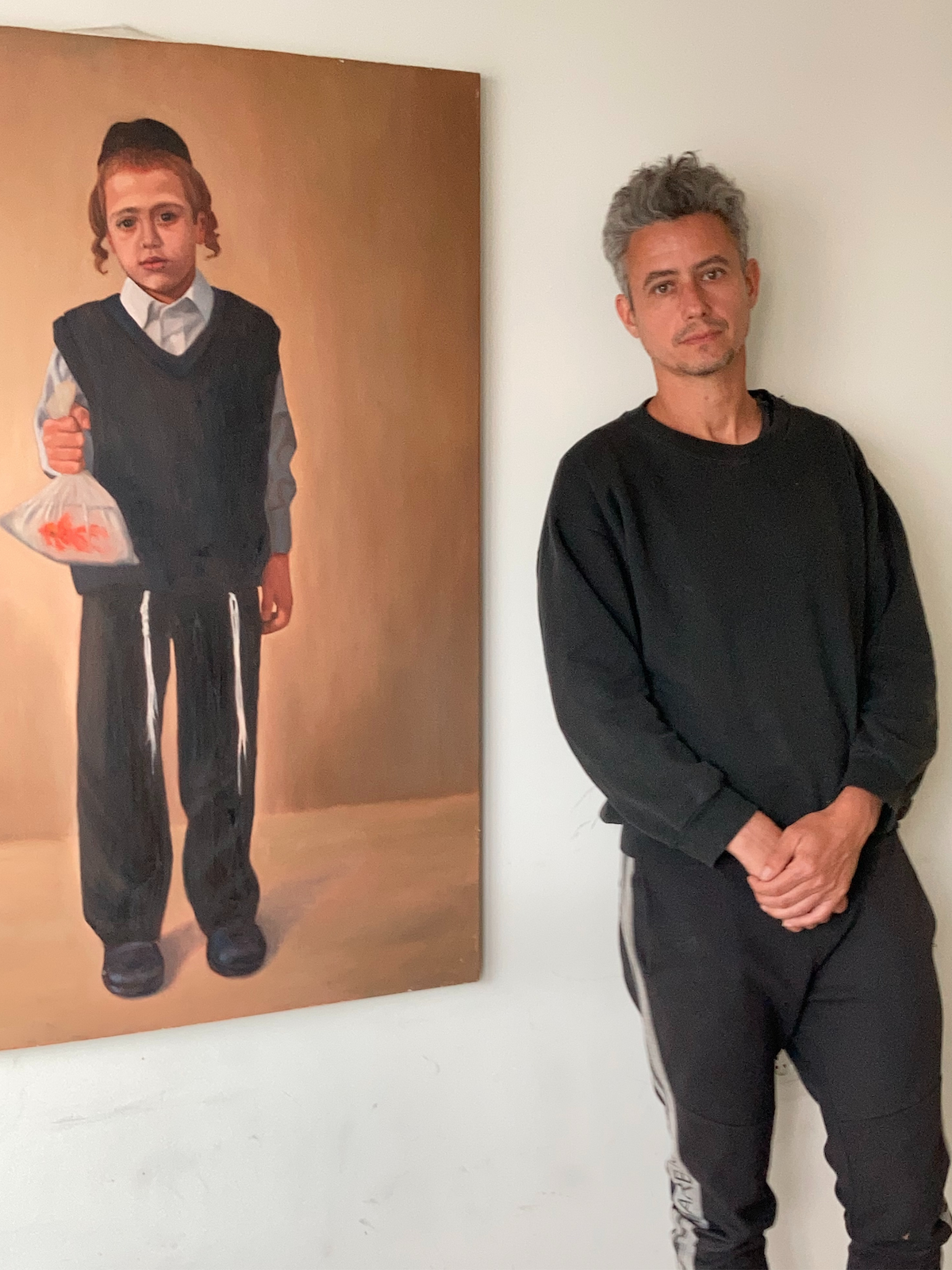
For a time, Tubis aspired to be a filmmaker, but he shifted back to painting when he saw an exhibition that traveled to Israel from Vienna’s Kunsthistorisches Museum. Tubis was 17 and the show was his introduction to old masters, specifically Diego Velázquez’s “Portrait of Prince Philip Prospero” and Paolo Veronese’s “Judith with the Head of Holofernes.” After his mandatory army service, Tubis was accepted to Israel’s prestigious Bezalel Academy of Arts and Design, where he studied painting and “found my people,” he said.
Tubis’s oil paintings debuted in Season 2 of “Shtisel,” during which he forged an artistic practice with the show’s creator and producer, Ori Elon. Elon regularly cited influences such as Édouard Manet or Rembrandt that he wanted Tubis to incorporate in a particular portrait. A crucial part of Tubis’s process is not to read the script before he paints for an episode. “Ori summarizes the show for me, and I watch it when it airs,” he said. “I feel secure as a painter to listen to Ori’s opinions.”
Tubis’s method of working with Elon has not been without its glitches. For example, working on Libbi’s bridal portrait for Season 3 was a creative struggle for Tubis. Having painted watercolor landscapes almost exclusively before he ghost-painted for Akiva, he noted that he was “rusty when it came to painting figures.” Elon wanted Libbi to smile in the portrait, but the directive contradicted a tenet of Tubis’s philosophy as an artist. “The first thing I tell my students when they paint a portrait is don’t paint the subject smiling,” he said. “A smile can work in photography, but painting has a time of its own.”
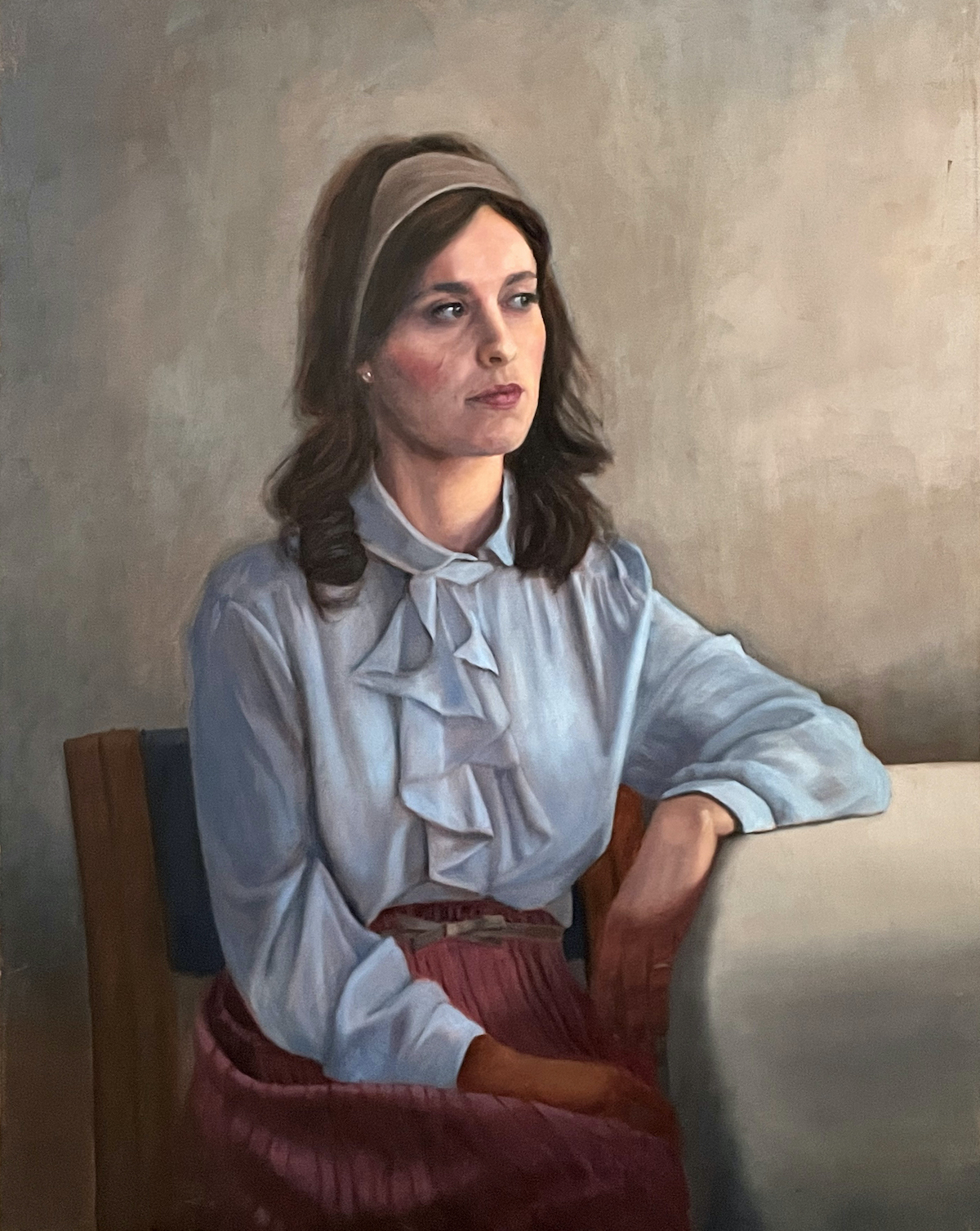
After several false starts, he literally confronted the painting. “I told the painting, ‘I’m not afraid of you,’” he said. “I wanted to enjoy painting that portrait, and to do that I moved the brushes in directions they asked to be moved. I take no responsibility for it, but I made an exacting expression of a loving, sad smile.”
Tubis said another fan favorite on the show is “The Boy with Fish,” a portrait that hangs in Akiva’s studio in Season 2. At Elon’s suggestion, Tubis studied Manet’s “The Fifer” to capture the effect Elon wanted. Tubis then put his own stamp on the portrait when he fused Manet’s style with one of his favorite portraitists, Valentine Serov.
Tubis said that of all the paintings in the series, “The Boy with Fish” connects his core truth as an artist with his subject and ultimately the character of Akiva. “The boy doesn’t have his own ground, which is like Akiva after the loss of his mother,” Tubis said. “It’s also very much what I went through when I moved from Russia to Israel. I didn’t have my own ground either. Only I could paint the boy’s expression as someone who went through a similar experience; that expression can only come out if you have it inside of you. I let those feelings out when I painted it.”
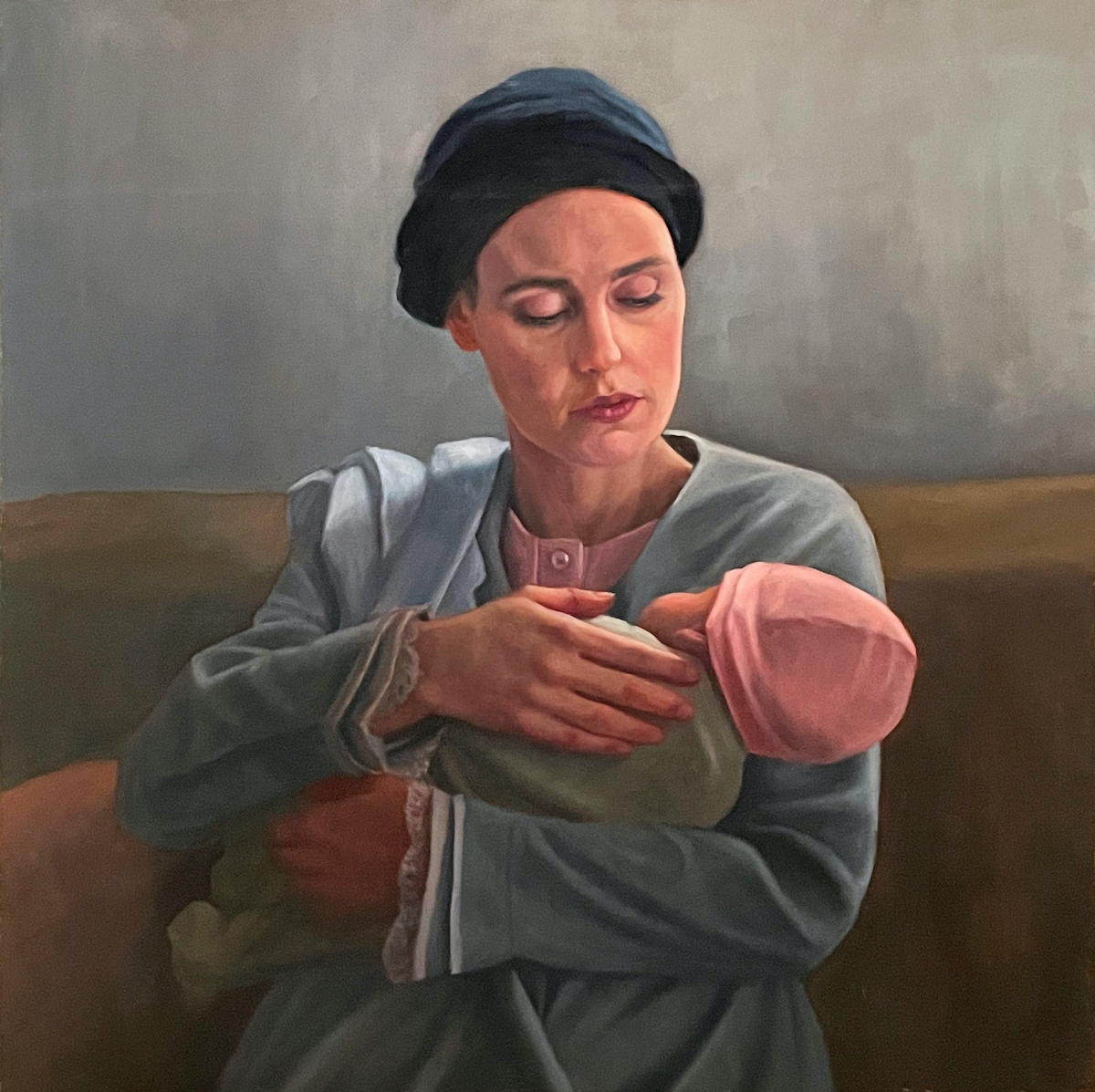
On his first pass of the portrait of Akiva’s mother feeding her infant son, Tubis set the painting in daylight, and the mother faced the painter. Her breasts were more exposed. When Elon saw it, he asked Tubis to evoke Rembrandt. Tubis painted a dark background depicting mother and child in an empty space. “That painting was done very close to deadline,” he said. “I sent Ori versions of the painting every hour. He also asked me to leave some of the mother’s hair peeking out of her head covering so Shulem could paint over it.”
One of Tubis’s more striking pieces for the show is his portrait of Akiva’s new love interest, Racheli, surrounded by fire. Tubis said the flames represent Libbi’s lingering presence in Racheli and Akiva’s relationship. “The fire is Libbi and Racheli is the new love in the middle of that blaze,” he said. “Racheli is deliberately not consumed after Akiva visits Libbi’s grave to ask her permission to move on.”
Tubis recalled that he sent the portrait to one of his teachers, who thought the fire was lifeless. His mentor told him that to give it variety, it needed a discernible rhythm. To achieve that movement, Tubis added color to the painting and moved his brush to the rhythm of the fire he heard in his head. “The fire could not be flat; I needed it to move,” he said. “Then I changed Racheli to save her from the fire but kept sparks of light in her eyes.”
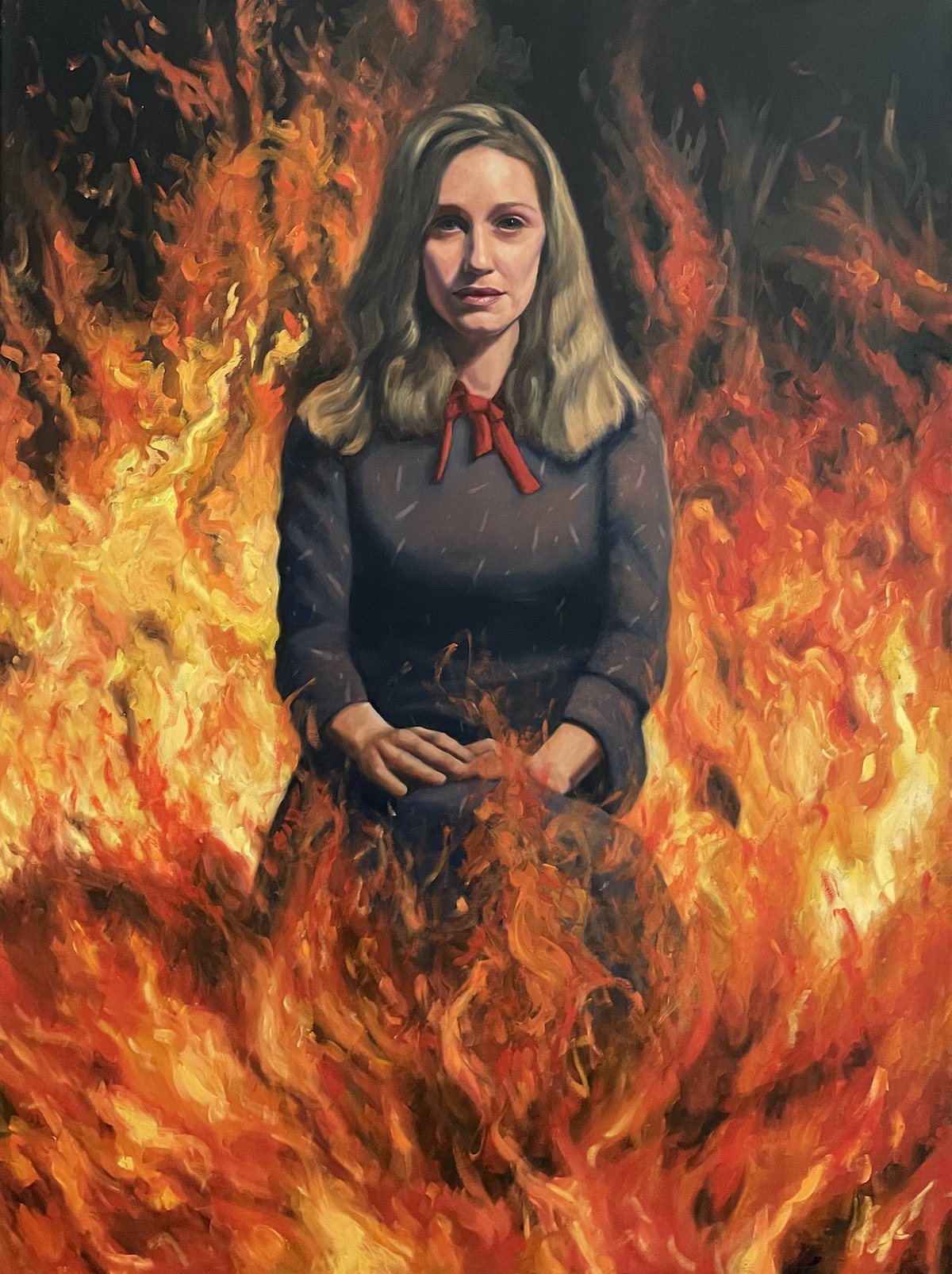
To give Michael Aloni’s performance authenticity, the actor spent time in Tubis’ studio. In his initial lessons, Aloni learned to hold a palette and position his subjects. He then returned for more in-depth instruction. “He digs deep,” observed Tubis of Aloni’s painting style. “The first time he came to me as a student, I saw that he looked at me the same way I look at my subjects when I paint. He told me that he saw a lot of similarities between Akiva’s story and mine. We are both processing loss.”
Tubis also brought his experiences with his Haredi students at Bezalel Academy to the set. The women in his classes take a full complement of religious studies classes in the morning and then attend Tubis’s visual communications course in the afternoon. His contact with Haredim, or ultra-Orthodox Jews, had been minimal until he taught the young women.
“I had no actual connection to the Haredim,” he said. “But I learned that when you don’t know people, you think they’re all the same. That’s how racism forms. The thing that surprised me the most was the range of orthodoxy within the Haredi community. I taught many of these women for four years, and at our last class, which was over Zoom, I got emotional. I told them I loved them, and as a teacher, it was very sad for me to part with them.”


